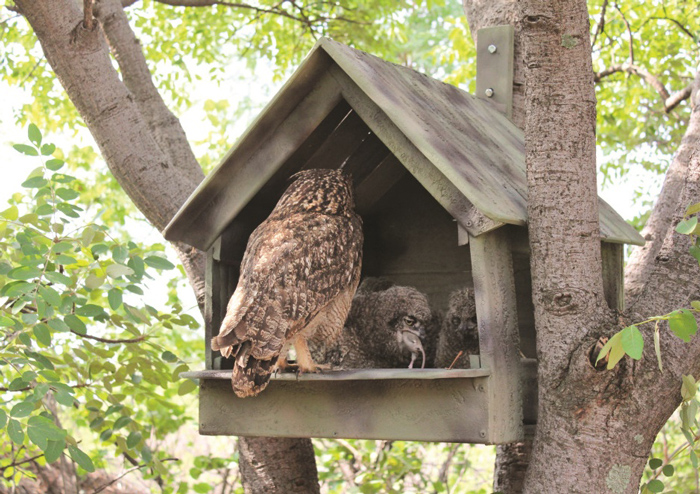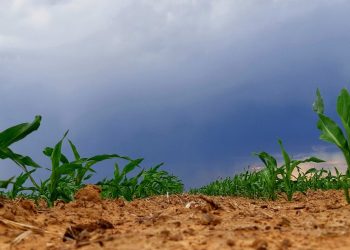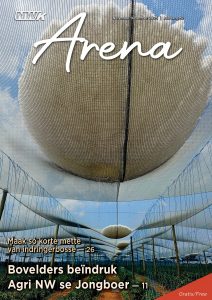
As urbanisation increases across the country, South Africans find themselves in a constant battle with pests such as rats, mice and cockroaches. Wherever there are humans, pests seem to follow.
Urban areas, in general, produce large amounts of waste on a constant basis. Most South Africans don’t have the luxury of a functional waste removal service. The municipalities are going bankrupt, and the municipal landfills are overfull. Due to these inconveniences, many people wrongfully resort to dumping their waste in open fields and public areas. This provides more than enough food for pests and while the supply lasts, pest populations will continue to increase.
Homeowners now find themselves buying expensive rat and glue traps, which are seen as unethical and inhumane. Rat and cockroach poisons are costly, bad for the environment and bad for your health. These poisons can also be life threatening to children or the beloved family pet when accidentally ingested. If only there was an environmentally friendly solution that required minimal running costs and effort, right? Well, owls are the solution!
South Africa has been blessed with various owl species and these predators have been proven to be very valuable in terms of natural pest control. This article is inspired by the NWK head office’s spotted eagle owl family, which has proven to be most valuable in deterring pigeons from nesting on the building.
The main goal of this article is to educate and motivate readers to invest in owl housing, as it can be highly beneficial to pest control efforts.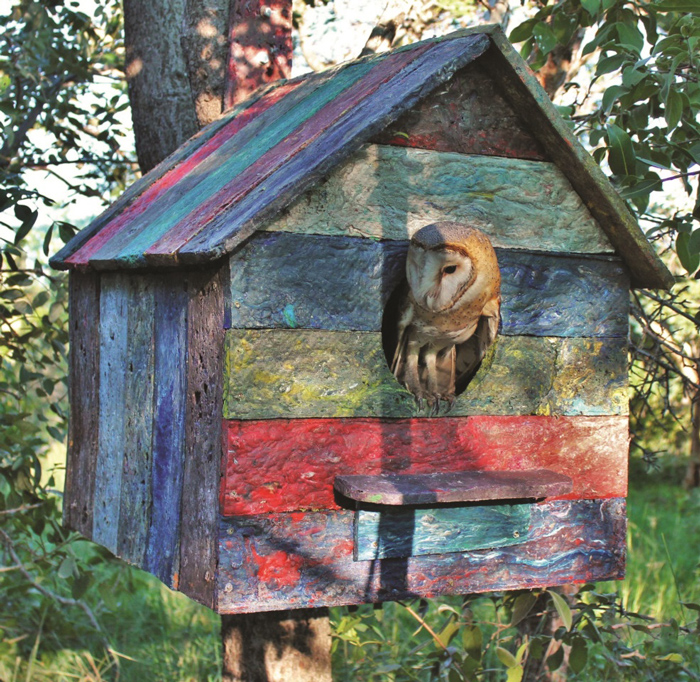 Owlhouses for sale as part of the Owl House Project at owlrescuecentre.org.za (Please note that loadshedding has significantly impacted production and availability). (Source: https://www.owlrescuecentre.org.za/Owl-House-Project/)
Owlhouses for sale as part of the Owl House Project at owlrescuecentre.org.za (Please note that loadshedding has significantly impacted production and availability). (Source: https://www.owlrescuecentre.org.za/Owl-House-Project/)
Adapted to urban living
There are two common owl species that have adapted very well to urban life in South African cities and towns. They are the spotted eagle owl (Bubo africanus), commonly known as the gevlekte ooruil in Afrikaans, and the barn owl (Tyto alba), which is referred to as the nonnetjiesuil in Afrikaans.
Both owl species have been attracted to urban areas due to natural habitat loss and the greater availability of food sources, such as rats and mice, in urban areas. These species don’t build their own nests, but rather make use of existing structures. There are about twelve owl species in South Africa, of which the spotted eagle owl and barn owl are known to find manmade owl houses as suitable nesting sites.
These species eat a wide range of prey, depending on the area that they inhabit. Barn owls have been recorded to consume various species of small birds, rodents, shrews, rabbits, geckos, lizards, termites and even scorpions.
The spotted eagle owl is known to consume rodents, rabbits, bushbabies, fruit bats, mole-rats, various bird species, insects (such as moths and cockroaches), snails and even snakes!
Common threats
Although these two owl species are quite common and are not listed as threatened or endangered, they do face a variety of threats:
- Natural habitat loss due to deforestation and urbanisation.
- Being killed by humans due to fear and false superstitious beliefs.
- Accidentally being hit by vehicles.
- Secondary poisoning when owls eat poisoned rats.
- Getting caught in farm wire fencing.
Owl housing requirements
It may be difficult at first to attract owls to your garden. The availability of food and nesting areas will ultimately determine if an owl will reside in a specific area.
You and your neighbours should refrain from using any rat poisons to combat rodent infestations. These poisons can take anywhere from twelve to 24 hours to take effect after being ingested by a rat. Thus, the rat is still up and mobile for a while after eating rat poison. In this time, it may be caught by an owl. The owl swallows its prey whole and therefore is unaware of any poison within the rat’s digestive system and will then likely die due to secondary poisoning.
In terms of nesting space, you can consider investing in a proper owl house. However, different owl species have different preferences when selecting a nesting space. Thus, you need to determine the most common owl species in your area to ensure that you select the correct type of owl housing.
- Barn owls prefer an enclosed owl house with one single opening.
- Spotted eagle owls, however, prefers to have large access holes on all four sides of the box.
The structure should also be accompanied by a perch onto which the owlets can climb when they start to move in and out of the nest. The base of the owl house should be lined with a fine substrate, such as sand, to allow the female to dig a shallow ‘cup’ in which she can lay her eggs.
Nesting boxes should be erected at a height of at least four metres above ground level. The box must be securely fitted to a stable structure and direct sunlight should be avoided. Ensure that you also place the box away from any prevailing wind. The breeding pair will prefer to have a clear flight path to the entrances of the owl house. Also try to place the box in a quiet area, where disturbances will be kept to a minimum.
It is important to ensure that dogs and cats won’t have access to the area, as spotted eagle owlets will spend some time on the ground once they get old enough to leave the nest but have not yet learnt to fly. Also try to place the box in a fork of a tree, as this is a natural nesting spot for both the spotted eagle owl and the barn owl.
Barn owls don’t seem to be too territorial, should there be an ample amount of food supply. However, spotted eagle owls are territorial and their nesting boxes should be placed at least 0,5 kilometres away from any other breeding pair of owls in a suitable habitat.
Nesting behaviour and grounded owlets
The barn owl will likely use the nesting box throughout the year, but the spotted eagle owl will only use the box during the breeding season. However, breeding pairs may return to the same nesting box year after year, should the conditions remain suitable. Both owl species generally form life-long pair bonds.
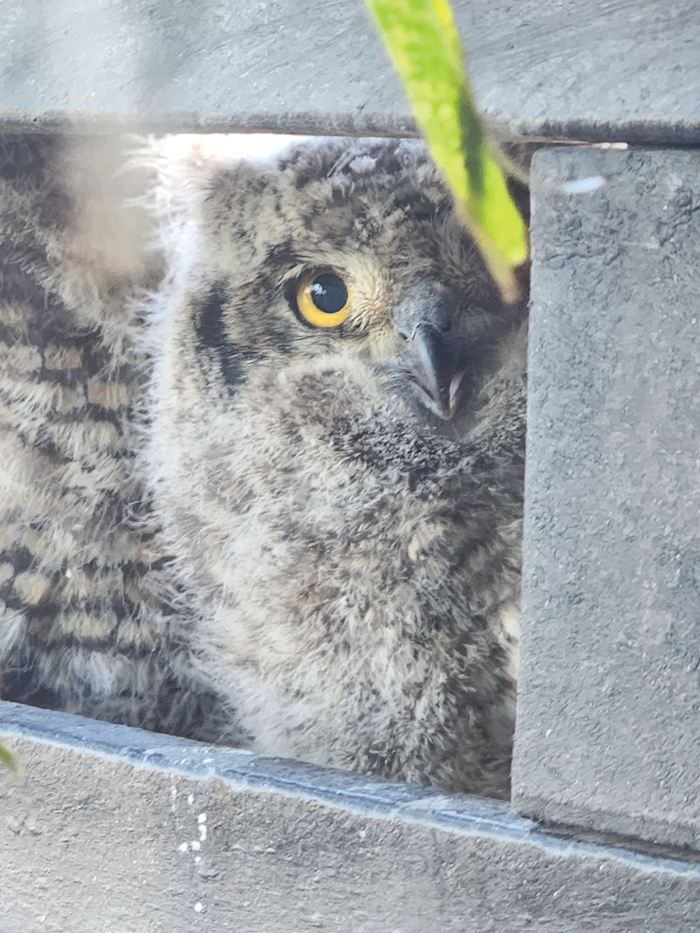
As previously mentioned, spotted eagle owlets will spend some time on the ground, once they are old enough, until they fully mature and learn to fly. During this time, it is important not to disturb the owlets or try to put them back in the nesting box. The breeding pair will always be nearby and will continue to feed their offspring until they can fly and hunt for themselves. During the day you will likely be able to see both parents roosting nearby in the trees or on building structures.
Barn owls, on the other hand, require a completely different approach in this regard. The breeding pair will only care for the owlets in the nest. Barn owlets will likely be left for dead if they fall out of the nest. Experts advise that, only in the case of barn owls, one should try to carefully put the owlet back in the nest and see if the mother tries to feed and care for it. If she doesn’t, then it would be better to take the owlet to a professional rescue and rehabilitation centre.
Summary
It is really amazing to see how these creatures have adapted to live alongside humans in urban environments. They are majestic animals and being able to see them live their day-to-day life, when nesting nearby your home or office space, should be regarded as a blessing.
Proper research is essential before you purchase an owl house. The spotted eagle owl and barn owl are the two species that welcome the implementation of owl housing, although they have different nesting preferences. Owls help humans by keeping pests at bay, so we might as well return the favour by providing appropriate nesting boxes in ideal locations. It’s worth the investment!
References
- African Raptor Centre (21 August 2023). Barn owl. Retrieved from africanraptor.co.za:
http://africanraptor.co.za/gallery/barn-owl/#:~:text=Scientific%20Name%3A%
20Tyto%20alba%20Afrikaans,its%20heart%2Dshaped%20facial%20disc - Bird Life South Africa (21 August 2023). Build your own owl house. Retrieved from birdlife.org.za: https://www.birdlife.org.za/old-navigation/owl-boxes/
- Iziko Museums of South Africa (21 August 2023). Biodiversity Explorer. Retrieved from biodiversityexplorer.info: http://www.biodiversityexplorer.info/birds/tytonidae/tyto_alba.htm#:~:text=It%20often%20uses%20the%20same,when%20prey%20availability%20is%20high
- Notten A (21 August 2023). Spotted eagle owl. Retrieved from sanbi.org: https://www.sanbi.org/gardens/lowveld/wildlife-biodiversity-4/spotted-eagle-owl/#:~:text=An%20owl%20pair%20has%20a,them%20a%20successful%2C%20widespread%20species
- Owl Rescue Centre (21 August 2023). Owl House Project. Retrieved from
owlrescuecentre.org.za: https://www.owlrescuecentre.org.za/Owl-House-Project/



